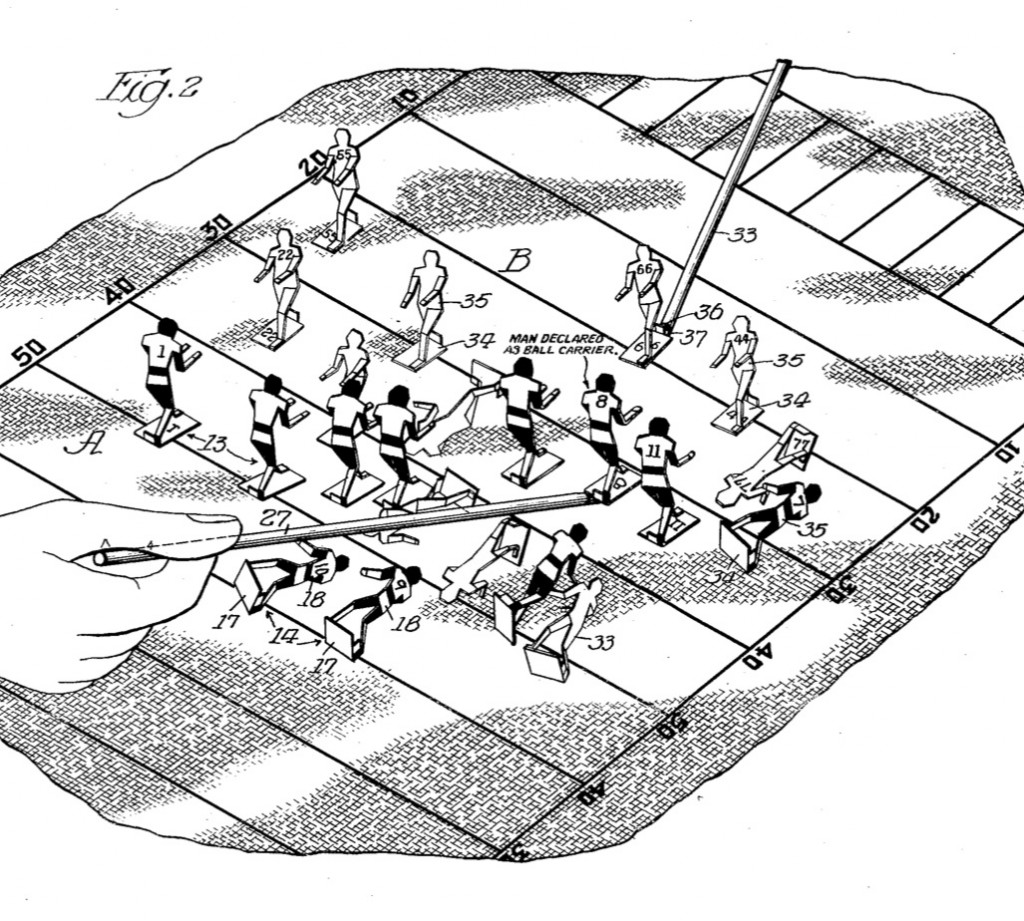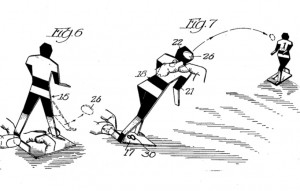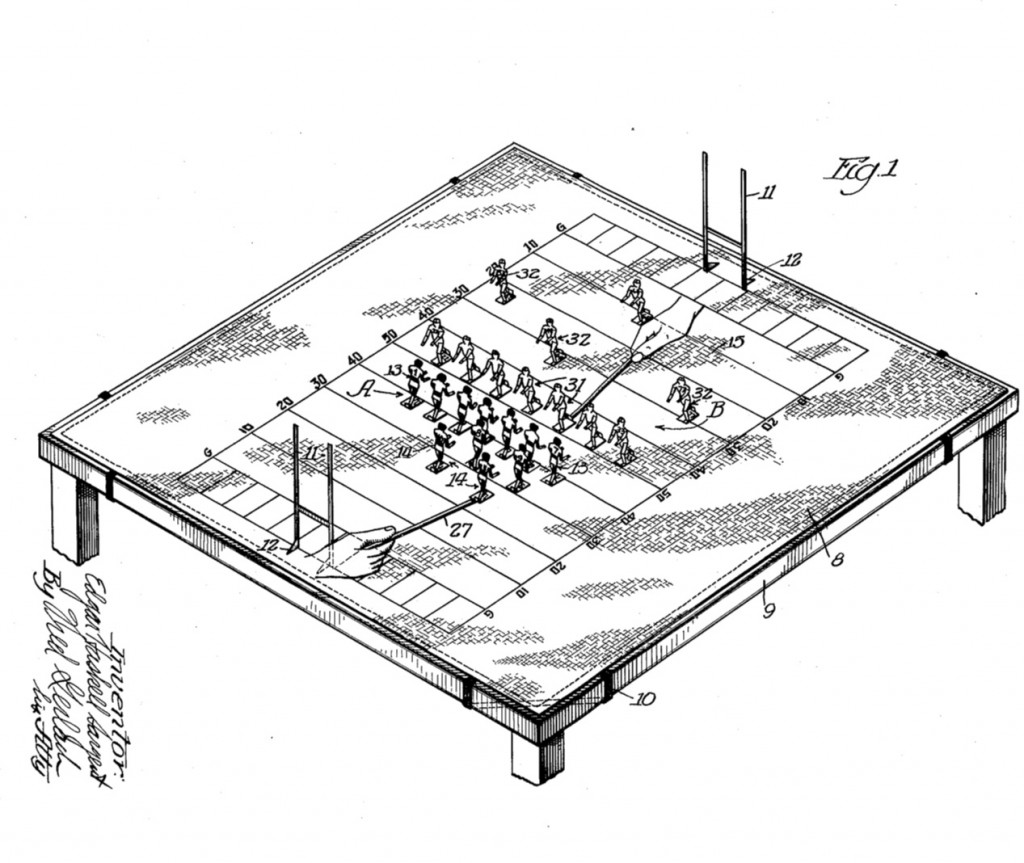We’ve been using our “Before Electric Football” posts to describe football games that were designed and patented before Tudor showed up with the Tru-Action model at the 1949 Toy Fair.
Today’s post is about at game that was patented by E.H. Sargent in 1933, and titled simply “Football Game” (Patent No. 1,929,757). Mr. Sargent’s game consisted of a cloth card table-sized field, which had all the appropriate yard markings as well as goal posts. The 11 players per team – 7 linemen and 4 backfield men – were to be made out of metal, consisting of a flat body and and a flat base. Of course the teams would be made in different colors, and each team would have a special substitute kicking player.
 Rules were identical to football – there was passing, running, and actual tackling. As always with “action” football games, it’s the mode of player locomotion that makes or breaks the game. Sargent proposed his game for two human players, with the mode of movement being done with a stick, or a “pusher.” Each player would hold a single “pusher” and use it to maneuver the figures around the field, and ultimately into each other for a “tackle.”
Rules were identical to football – there was passing, running, and actual tackling. As always with “action” football games, it’s the mode of player locomotion that makes or breaks the game. Sargent proposed his game for two human players, with the mode of movement being done with a stick, or a “pusher.” Each player would hold a single “pusher” and use it to maneuver the figures around the field, and ultimately into each other for a “tackle.”
 Passing was done with a finger-flick off the back of a player (see figure 7), and field goals were completed via the Drop Kick. Since this wasn’t an era of extensive passing, it’s likely that the practice needed to become a proficient passer was never completed. (Sounds familiar?)
Passing was done with a finger-flick off the back of a player (see figure 7), and field goals were completed via the Drop Kick. Since this wasn’t an era of extensive passing, it’s likely that the practice needed to become a proficient passer was never completed. (Sounds familiar?)
Like the other games that were featured last year, it’s unknown as to whether this game, or any derivation of it, was actually produced. But it is a fascinating game, and another step in football game evolution to what became THE action football game of all-time — Electric Football.
Earl & Roddy

